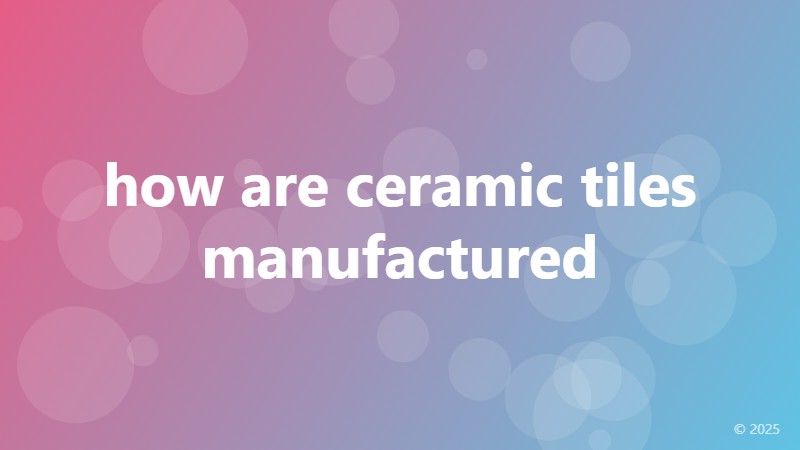how are ceramic tiles manufactured

The Process of Manufacturing Ceramic Tiles: A Step-by-Step Guide
Ceramic tiles have become a staple in modern interior design, offering a unique blend of style, durability, and functionality. But have you ever wondered how these tiles are manufactured? From raw materials to finished products, the process of creating ceramic tiles involves several intricate steps. In this article, we'll delve into the world of ceramic tile manufacturing and explore the journey of transforming raw materials into stunning, long-lasting tiles.
Step 1: Raw Material Selection and Preparation
The manufacturing process begins with the selection of raw materials, including clay, silica, feldspar, and other minerals. These materials are extracted from quarries and transported to the manufacturing facility, where they are crushed and ground into a fine powder. The powder is then mixed with water and other additives to create a workable mixture, known as the "body."
Step 2: Tile Body Formation
The body mixture is then pressed into a mold using a hydraulic press, which shapes the mixture into the desired tile form. The mold is designed to create the specific shape, size, and texture of the tile. The pressure applied during this process ensures that the tile is dense and uniform, which is essential for its strength and durability.
Step 3: Drying and First Firing
After the tile is formed, it is removed from the mold and placed on a conveyor belt, where it undergoes a drying process to remove excess moisture. The tile is then fired at a low temperature (around 1000°C) in a kiln, which helps to remove any remaining moisture and create a hard, brittle surface. This process is known as "bisque firing."
Step 4: Glazing and Second Firing
Once the tile has been bisque-fired, it is glazed with a layer of colored glaze, which is applied using a variety of techniques, including spraying, pouring, or hand-painting. The glazed tile is then fired at a higher temperature (around 1200°C) in a kiln, which causes the glaze to melt and form a hard, glass-like surface. This process is known as "glost firing."
Step 5: Quality Control and Packaging
After the tile has been fired, it undergoes a series of quality control checks to ensure that it meets the required standards. The tile is inspected for defects, such as cracks, warping, or uneven glazing. Once the tile has passed the quality control checks, it is packaged and prepared for distribution to manufacturers, retailers, and consumers.
The Final Product: A Work of Art
The end result of this intricate process is a stunning, durable, and functional ceramic tile that can be used in a variety of applications, from kitchen backsplashes to bathroom floors. Whether you're a homeowner, architect, or interior designer, ceramic tiles offer a unique combination of style, functionality, and sustainability that is hard to match. By understanding the process of manufacturing ceramic tiles, you can appreciate the craftsmanship and attention to detail that goes into creating these beautiful, long-lasting tiles.